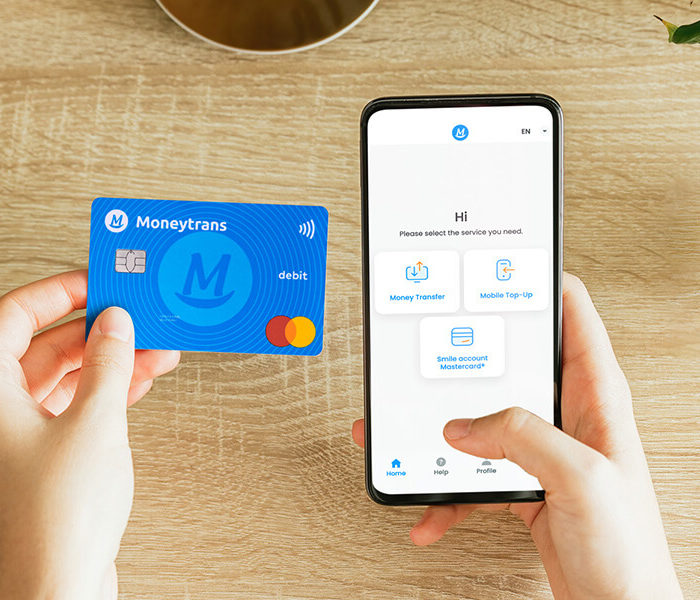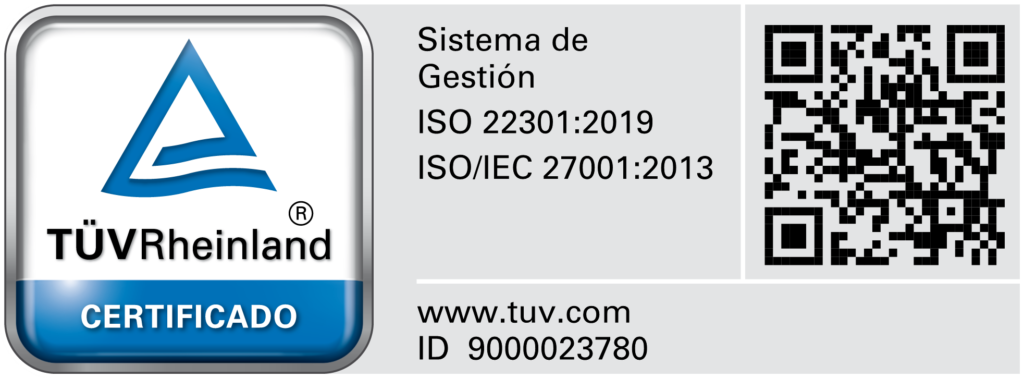Are you an immigrant considering living in Italy? In this guide you will find all the necessary information about documents, residence/work permits, bank accounts, sending money, health care, driving licences and finding accommodation. With this practical guide, living in Italy will be easier!
1. Necessary documents to live in Italy
All migrants wishing to live in Italy will have to obtain the appropriate documentation or visa to enter Italy. ¿ How long do you intend to stay? The permit to stay in Italy can be temporary or long-term:
Temporary residence permit
The temporary residence permit authorises you to stay in Italy for a period of more than 90 days and less than five years. This type of authorisation can be renewed periodically, at the request of the person who decides to live in Italy.
Long-term residence permit
The long-term residence permit is the permit that allows you to work and live in Italy indefinitely, under the same conditions as an Italian citizen. Immigrants who reside temporarily in Italy for a continuous period of five years and who fulfil the regulatory conditions are also entitled to this residence permit. Periods of previous and continuous residence in other EU Member States are also taken into account.
Can I be refused permission to enter Italy? The official Italian government website lists the reasons why you would be banned from entering and living in Italy:
- Have previously been expelled or repatriated from Italy or a Schengen State.
- Be expressly banned from entry for activities contrary to Italy’s interests or human rights or for known connection with criminal organisations.
- You are wanted internationally for criminal offences.
- Be a danger to public health, public order, national security or the international relations of Italy or of other States with which Italy has an agreement in this respect.
- Have exhausted the 90 days of stay in a period of 180 days.
Therefore, foreigners will be allowed to enter Italian territory on condition that they are in possession of all valid and necessary documentation and do not have any of the above-mentioned points.
1.1 Residence permit in Italy
You may need to apply for a visa or other permit if you want to visit, live, work or study in Italy. This essential guide will help you find the Italian permits you need depending on your nationality and situation.
If you are a citizen of another European Union (EU) or European Economic Area (EEA) country, including Norway, Iceland, Liechtenstein or Switzerland, you will be lucky enough not to need a permit to live, work or study in Italy. Everyone else will need a visa and, if you want to work, in most cases you will need a work permit.
Short stay
A short-stay Schengen visa allows you to stay in Italy, but not to work, for up to 90 days in a 180-day period. Citizens of the United States, Australia, Canada and New Zealand do not need a short-stay visa to enter Italy but will need to apply for a long-stay residence visa to stay for more than three months.
To find out if you need a Schengen, you need to fill in an application form, which you can download here, and apply through the Italian embassy or consulate in your home country. You can renew your short-stay visa at the Ministry of Foreign Affairs or at your local police station as long as you will be in Italy for a total of less than 90 days. You cannot come to Italy on a short-stay tourist visa and change your status to employee, student or resident in Italy: you must return to your home country and apply for a new visa from there.
Long-term stay
There are different types of work and residence permits, depending on the purpose of your stay:
- A combined work and residence visa that allows you to live and work in Italy.
- A study visa for the duration of an education or training course.
- A residence visa for family reunification.
- We explain each of them in detail:
The EU long-term residence permit:
The EU long-term residence permit replaced the residence card for foreigners in January 2007. The official website of the State Police says: “This residence permit can only be applied for by those who have had a valid residence permit for at least five years. In fact, a five-year stay in Italy is a prerequisite for the issuance of an EU long-term residence permit. It must also be demonstrated that the foreigner has a minimum income of not less than the annual amount of the social allowance and that he/she is not a danger to public order or to the security of the State”.
The application must be submitted at the post office or, without using the kit, can be addressed to the municipalities that offer this service or to the local councils.
The required documents are:
- copy of your passport or equivalent, valid document;
- a copy of your income tax return (income must be higher than the annual amount of social benefit); for domestic helpers (domestic helpers/carers): INPS bulletins or an analytical contribution statement issued by the INPS;
- a criminal record certificate and a certificate of annotations relating to criminal proceedings;
- adequate documented accommodation if the application is also submitted for family members;
- copies of payslips for the current year;
- documentation concerning residence and family status;
- electronic ticket for payment of the residence permit (30.46 Euro);
- 16.00 euros for the telematic marker;
- The cost of registered mail is 30 euros.
Residence permit for study purposes:
You must find a course to study in Italy before you can apply for a visa. Before you can apply for a study visa, you must find a course or programme at an officially recognised institution in Italy. You must then obtain official confirmation from the organisation that you have been accepted onto the course or programme, with a certificate or letter of acceptance. Once obtained, you can apply for a student visa.
- The student residence permit authorises part-time work for a maximum of 20 hours per week and an annual limit of 1,040 hours.
- The student residence permit can only be renewed if the entry visa was issued for the purpose of attending a multi-year course of study.
- In any case, the student residence permit cannot be renewed for more than three years after the duration of the multi-year course of study.
- The residence permit for studies cannot be used or renewed to attend a course of studies other than the one for which the visa was granted, with the exception of the transfer to another faculty granted by the academic authority and the access to a university-type course at the end of the attendance in Italy or to a medium/high level course.
- The residence permit for studies can be converted into a residence permit for work by acquiring a quota within the decree for the programming of entry flows for work by proving that the requirements of the regulation for the type of work carried out are met:
- by a foreigner who is already legally in the national territory when he/she reaches the age of majority;
- by a foreigner who has obtained a degree or a specialisation qualification in Italy, after the completion of the relevant course of studies in Italy.
Residence permit for family reasons (family reunification)
A residence permit for family reasons is granted to a foreigner who has entered the country for the purpose of family reunification or on a visa accompanying his or her family member.
The duration of the family residence permit is the same as the duration of the family member’s residence permit. The family residence permit may also be used for other activities permitted to the foreigner, even without converting or rectifying the document, during the period of its validity.
The application must be submitted to the post office by means of a kit and the documents to be enclosed are:
- completed and signed application form (form 1);
- photocopy of the completed passport or other equivalent document (see Table 4);
- for the application for the issuance of the residence permit, form 1 is to be completed at the Sportello Unico Immigrazione (Immigration One-Stop-Shop), which issues the entry authorisation for family reunification;
- the application for renewal of the residence permit must be accompanied by a declaration of the family member, who applied for and obtained the family reunification or with whom the family reunification took place, to take care of the subsistence of the member of his or her household.
1.2 Tax code
The tax code is the means of identification of natural and non-natural persons in all relations with public bodies and administrations. Citizens who are also entitled to health care from the National Health Service receive the Health Card (which also contains the fiscal code). The only valid code is the one issued by the Agenzia delle Entrate.
The assignment of the fiscal code to foreign citizens who apply for entry into the territory at the Immigration One-Stop-Shop, for subordinate employment and family reunification, is carried out by the same one-stop-shop through the telematic system of connection with the Fiscal Registry Office. When an appointment is made at the counter, the citizen also receives the certificate of allocation of the tax code.
Through an online connection with the Tax Registration Office, the police headquarters assigns the tax code to foreign citizens who do not have it and requests the issuance/renewal of their residence permit.
1.3 Identity Card (CIE Electronic Identity Card)
The CIE is the evolution of the paper version of the identity card; the application must be made in the municipality of residence.
Documents required for issuance:
- A recent passport photo in colour on a light background, with bare head.
- Health card (Carta Nazionale dei Servizi) or tax code.
- For non-EU citizens: valid residence permit or residence card.
- The cost of issuing it is 22,50 Euro.
It is valid for 10 years and, for non-Italian citizens, is not valid for expatriation.
2. Finding accommodation in Italy if you are a foreigner
In Italy there are many real estate agencies that can help you find accommodation both before and after your arrival. The downside is the high fees charged for finding accommodation.
For this reason, we recommend that you contact immigrant groups on social networks, either nationally or locally, to help you choose the best accommodation. And, above all, compare prices.
On the other hand, if you prefer to find your accommodation in Italy without the help of real estate agencies, you have the possibility to browse specialised and secure websites. Here is a list of accommodation websites in Italy that we hope will be of great help to you:
- www.wikicasa.it
- www.idealista.it
- www.casa.it
- www.tuttocasa.it
- www.immobiliare.it
- www.subito.it
These websites allow you to search available rentals by price range and neighbourhood to find the accommodation in Italy that best suits your needs. In addition, you can filter by number of rooms and other services to consider. For the rent, you will be asked for a deposit: 1 or 2 months of rent, as well as guarantees: ” salary ” or ” contribution “, which usually correspond to a guarantee from your bank or employer.
On the other hand, it is important to know that the price of rent is not uniform in all Italian provinces and also depends on the Italian economy. Nevertheless, you should be aware that, within each province, prices may vary depending on the area in which you live.
3. Health care system for migrants
All non-EU foreign nationals are entitled to compulsory registration with the National Health Service (SSN) if they are legally resident in Italy and are regularly employed or self-employed, or are registered on the employment lists, or have applied for the renewal of their residence permit.
To benefit from the services offered by the SSN, it is necessary to be registered, and the health card is the document that proves registration. This document is individual and is used to access care.
To register with the National Health Service, you must go to the ASL with the following documents:
- a valid residence permit or an application for renewal of a residence permit attested by a receipt issued by the post office or the Questura;
- self-certification of residence or, in the absence thereof, a declaration of actual residence, as stated in the residence permit;
- tax code or self-certification;
- a receipt certifying the submission of the application for the first residence permit for subordinate employment, issued by the Post Office.
Duration of registration with the SSN:
The duration of the health card is the same as that of the residence permit. Pending the issuance of the family permit or the first work permit, the registration is temporary and will be converted into the same duration as the permit when it is presented.
What the health insurance card entitles you to:
- have a family doctor or a paediatrician
- free hospitalisation in public and conventional hospitals
- pharmaceutical care
- general medical examinations in an outpatient clinic
- specialised medical examinations
- home visits
- vaccinations
- blood tests
- X-rays
- ultrasound scans
- medication
- rehabilitation and prosthetic care
- other services included in essential levels of care
4. Bank accounts and bank transfers
Every year, thousands of immigrants arrive in Italy to embark on a new life path. Upon arrival, the most important thing is to speed up the process of accreditation as residents in Italy and to manage our financial situation. But how can I manage my financial situation in Italy? Getting started with administrative or financial matters in a new country can be a headache. But don’t worry, in this definitive guide to life in Italy we will explain in detail how to open a bank account in Italy, what conditions you should take into account and compare, or which are the main banks in Italy.
On the other hand, if you are an immigrant and need to send money back home, we want you to be informed about how remittances work in Italy and choose the most reliable method for you. And we know how important your remittances are. Every year more than 270 million migrants send billions of euros back to their home countries. Millions of heroes who leave their homes in search of a better future for themselves and their families. Thanks to them, houses are built, families are fed, children are educated, those in need have access to healthcare or invest in a small business that will keep a whole family afloat. It is therefore essential to have all the information on remittances from Italy. The more informed you are, the more experienced you are, the more options you will have. Therefore, in the following section, we will explain which remittance methods exist in Italy and, above all, which one is preferred by the immigrant community. As well as the advantages and disadvantages of these methods so that you can decide who to entrust your money to with complete security and confidence. We have also included some tips that you may find very useful.
So, if you are thinking of sending money from Italy or opening an account in the country, here is all the information you need to choose the option that best suits your needs.
4.1 How to send money to your family abroad
These are the main ways to send money from Italy:
1. Apps or digital platforms
Digital platforms are also a safe way to send money. You have to register and pay with your debit or credit card. Again, remember to research the platform carefully, taking into account factors such as the reliability of the company and practicality of use; the Moneytrans app is a good option.
2. Money transfer or remittance agency
The procedure of sending money through remittance companies or remittance branches is quick, easy and safe. You can pay in cash or by debit card, just identify yourself and fill in the remittance form. There is also the option of sending money online through these same financial services companies. This is one of the most widely used methods of sending money by migrants; in fact, 84% of migrants who send remittances choose to do so with a money transfer company because of its speed.
However, when choosing your money transfer company, you should also take into account other factors such as security or proximity, which are essential to help you with everything you need. If you do not know which one to choose, we recommend Moneytrans. This financial services company has been in the market for more than 20 years, offering the best quality-price ratio, the latest security technology and a multilingual customer service team to answer your questions in your mother tongue. From their website you can either calculate your remittance at the agency or through the Moneytrans online platform.
3. International money order
The international money order is a service offered by the Italian Post Office. You can do it at your nearest post office. Please note that it is not the cheapest or fastest way to send money.
4. Bank transfer
Sending money through a bank is a safe way to send funds to other countries. To do this, you will need to provide the details of the bank account of origin and the details of the destination account abroad.
For a transfer within Europe to a country that uses the euro, you can look for banks that do not charge fees for such transfers outside your home country. If you want to send to countries outside the EU or that do not have the euro as their currency, be aware that the fees charged by some large banks may be very high or the exchange rates unfavourable. Therefore, bank transfers for small amounts of money are an expensive method. However, for larger amounts – for example, from 10,000 euros upwards – it is a cheaper way.
4.2 How to open a bank account
Opening a current account is a simple operation and only requires the presentation of a few documents.
Before going to the bank, we recommend that you first compare the costs and services, in fact there are different types of bank accounts and each bank offers different prices, so before proceeding to the signing of a current account read carefully the information sheet that will be presented to you.
The requirements for opening a current account are not very high, as the law does not foresee any major limitations. Anyone of legal age can open a current account, but banks also offer solutions for younger people, such as prepaid cards or passbooks.
What documents are needed to open a current account?
- tax code.
- valid identification document.
- certificate of residence (not required by all banks and institutions).
Additional documents may also be requested if the bank has special rate schemes, such as a document proving enrolment at the university.
Many banks have current accounts with preferential rates for students and the only way to take advantage of these is to prove that you are regularly enrolled in a university course.
How much does it cost to open a current account?
Banks do not charge any fees for opening a current account. The cost of operations and account maintenance will depend on the fee plan chosen, the type of account and your needs.
The maintenance fees for a current account are divided into three components:
- Tax on documented legal acts: required by law and the same for each type of account you open;
- Fixed costs: this includes card fees, annual account management fees and the costs incurred by the bank in sending documents and information material to the customer. Each bank and each type of account has different costs;
- Variable costs: this is the section that varies according to the operations carried out, which may be withdrawals from other banks, transfers, payments abroad, etc.
For more information:
You can use your credit card at most retail outlets in Italy. Please note that if you withdraw funds from an ATM that does not belong to your bank, you will probably be charged a fee. If it belongs to your bank, you will not be charged a fee.
You can also exchange currency at bank branches, bureaux de change or directly online to benefit from better rates and fees.
5. Internet and telephone services in Italy
Good news! For EU citizens, as of June 2017, roaming no longer involves additional costs within the European territory: in theory, there are no additional costs for using your mobile phone in any of the 27 EU countries. So, if your calls are within the EU, you don’t have to cancel your mobile subscription or disconnect your mobile data.
Here is a list of the main operators in Italy: Vodafone, Wind, Tim and many others. There are also cheaper alternatives that will allow you to communicate with your family and friends abroad:
No Internet:
- Moneytrans Top Up: Thanks to this international mobile phone service, you can top up your phone or that of your loved ones at very low prices through Moneytrans. Topping up your or your loved one’s phone is instant, and you don’t need to register. With over 400 local, national and international mobile phone operators, you can top up your phone worldwide.
With an internet connection:
- Skype.
- WhatsApp: the most used mobile messaging system in Italy.
- Viber.
- Messenger.
6. Getting married to a foreigner in Italy
Foreigners can validly marry in Italy according to the Italian civil procedure or with a religious procedure valid for civil purposes, according to the religions admitted in the State.
In the case of a foreigner residing in Italy, the celebration of the marriage must be preceded by the publication of the marriage banns, which must be requested from the civil status office of the municipality in which he/she is registered.
Documents to be presented:
- Passport or personal identity card.
- Nulla Osta (Non-Impediment Letter).
- Birth certificate issued by the country of origin, translated and legalised.
Method of submitting the documentation:
As the conditions for marriage are regulated by the national legislation of the country of origin, the fundamental document for the celebration of the marriage of a foreigner in Italy is the Nulla-Osta, issued by the competent authority of the country of origin.
Based on specific international agreements and conventions, different conditions apply to certain foreign citizens.
The Nulla-Osta must certify that there are no impediments to the marriage according to the laws of the country of origin, and must clearly indicate the following data: name, surname, date and place of birth, paternity and maternity, nationality, residence, and marital status.
It can be issued:
- By the Consular Authority in Italy; in this case the signature of the Consul must be legalised at the competent Italian Prefecture.
- By the competent authority in your own country; in this case, the document must be legalised by the Italian Consulate or Embassy abroad.
If both spouses are foreigners and do not speak Italian, an interpreter must assist them both in the presentation of the documents and in the request for any publication and in the celebration of the marriage.
7. Support and subsidies for migrants
Does Italy support immigrants with grants and subsidies? This is one of the big questions that many immigrants ask themselves when they decide to live in Italy. The answer is yes.
Basic support is distributed in the following areas:
1. Humanitarian aid programmes
These programmes are aimed at immigrants who have not yet acquired Italian nationality, who are at an early stage of their migration and who are in a situation of extreme need. The General Secretariat for Immigration helps through the Temporary Stay Centres for Immigrants and with the collaboration of non-profit social organisations. This assistance includes full reception, transfers, first aid, intervention in settlements and care in day centres.
2. International protection and asylum
These aid programmes are designed to assist migrants who have needed to leave their country due to extreme circumstances, so to be approved for asylum they must demonstrate this need. This aid is managed by the Refugee Reception Centres and another solidarity programme.
3. Aid to migrants settled in Italy
The Immigration Law in Italy includes access to social security and social services for immigrants who have legal residence. To have full access to these benefits, it is necessary to go to the social security offices in your city or municipality to register with the social security system. Among the different facilities for immigrants are the following:
- Social reintegration and prevention programmes.
- Help in times of need and urgency such as being a victim of gender violence or being homeless.
- Financial aid for minor children and single-parent families.
- Financial aid for retirement or widowhood.
4. In terms of employment, we would like to highlight the following:
Unemployment benefit: this is an economic aid for certain groups of unemployed people who, having paid Social Security contributions through their work, have become unemployed. In order to receive this benefit, it is essential to be unemployed and registered with the Public Employment Service.
8. Driving licences and registration of foreign vehicles
If you have a driving licence issued by an EU Member State, you can drive in Italy without any problems. The licence is still valid and does not need to be converted, even if you have been living in Italy for more than a year. However, in the case of Community licences, it is advisable to apply for conversion, or recognition of validity, to speed up the procedures for renewal or possible duplicates due to loss, theft, etc. In the conversion procedure, the original licence is replaced by the Italian one, while in the recognition operation the original licence remains in the driver’s hand and a sticker is simply applied to it, allowing it to be identified in the national register of driving licence holders.
On the other hand, if you have a driving licence issued by a non-EU country, you can drive with your licence for a maximum of one year if you provide your licence with a full official translation. Foreigners residing in Italy for more than one year must apply for residency and convert their licence. Not all driving licences can be converted, and much depends on the existence of reciprocity agreements between Italy and the country in question.
Holders of non-convertible licences, if they wish to reside in Italy for more than one year, have no alternative: they must re-examine their licence. Non-EU nationals wishing to register a vehicle in Italy must be resident in Italy and in possession of their residence permit or of the receipt of the application for renewal or of the first issue of the document.
Road signs and rules of the road may also vary slightly from one country to another. Driving regulations are extremely strict in Italy, so we recommend that you look at web portals with test questions that can be of significant help.








